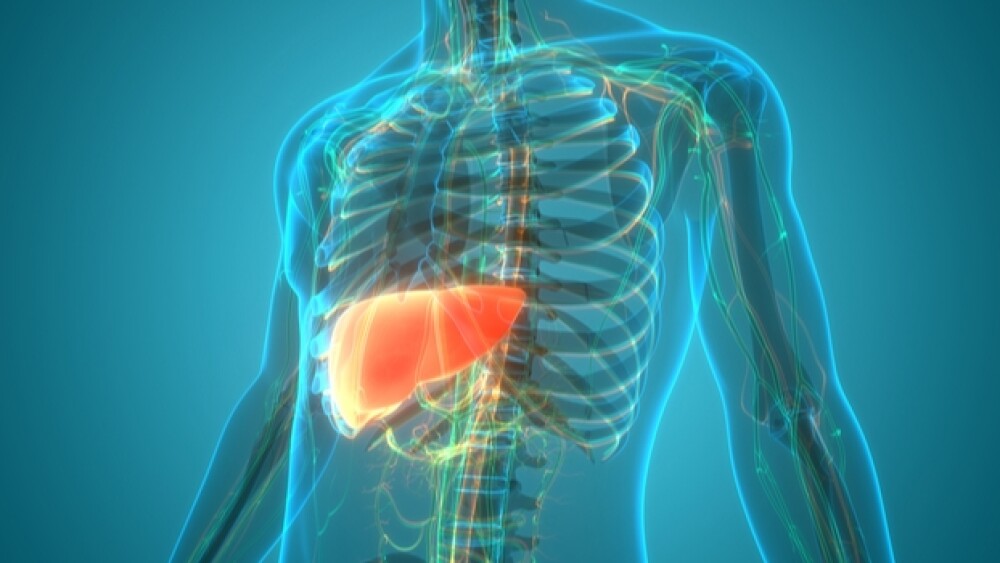Results of Viking Therapeutics’ metabolic disease program exceed all other oral therapies in development in terms of reducing liver fat for nonalcoholic steatohepatitis (NASH) patients, according to Greg Zante, SVP of finance.
Results of Viking Therapeutics’ metabolic disease program exceed all other oral therapies in development in terms of reducing liver fat for nonalcoholic steatohepatitis (NASH) patients, according to Greg Zante, SVP of finance. Speaking at the Stifel 2020 Virtual Healthcare Conference in mid-November, he cited reductions as high as 78%.
Its metabolic program is focused on NASH and the rare disease adrenoleukodystrophy (X-ALD). Data suggests the selective thyroid-ß agonists used in these two programs are highly tissue- and receptor-selective, produce potent lipid reductions and have solid safety profiles. Additional applications may include hypercholesterolemia and dyslipidemia.
Both compounds are small molecule thyroid hormone mimetics with oral, once-daily dosage.
Of the two, “NASH is receiving the most attention,” Zante said. NASH is a severe form of nonalcoholic fatty liver disease.
Viking’s metabolic disease program for NASH is advancing VK2809, licensed from Ligand Therapeutics, to reduce liver fat content in the Phase IIb Voyage trial. Based upon recently reported Phase II data, “Its safety window is broad, compared to historical therapeutic options,” Zante said. Murine studies showed highly-targeted concentrations in the liver at both four hours and 24 hours, with minimal concentrations in other tissues.
The goal for the compound is to be “very active on the beta receptors – which regulate lipid metabolism; reduce LDL cholesterol, triglycerides, and atherogenic proteins; and improves metabolic control – and silent on the alpha receptors – which have proarrhythmic potential, elevate the heart rate, and affect bones and cartilage,” Zante said. VK2809, which is localized to the liver, appears to meet that goal.
“The thyroid beta receptor seems to serve as a master switch for lipid metabolism. When you activate it, there tends to be an anti-fibrotic affect. We believe that’s a direct benefit,” Zante said. The reduction of fat in the liver also improves other histology measure, “so this could represent a broad benefit for patients with NASH.”
At baseline, patients in the Phase II study had elevated liver fat readings of 8% or more, and elevated LDL cholesterol and triglycerides. After 12 weeks, the VK2809-201 study reported the compound produced dose-dependent reductions in liver fat of 72% to 78%, and dose-dependent reductions in LDL cholesterol of 23.7 mg/dL to 28.3 mg/dL. Zante called the effect on the primary endpoint encouraging, and the results for LDL cholesterol particularly exciting.
Importantly, 88% of patients receiving VK2809 achieved at least 30% reduction in liver fat at week 12, and 70% of patients had at least a 50% reduction. Consistent results were achieved across common NASH risk factors, including Hispanic ethnicity and hypertension, and were maintained for four weeks after dosing.
“To our knowledge, this exceeds the data reported for any other oral agent for NASH,” Zante said.
Because plasma lipids also were reduced, there also may be long-term cardiovascular benefits. “It’s important to remember that most NASH patients die from cardiovascular related events, so to see this effect is very positive,” he added. Those results open the compound to the possibility of intermittent dosing or cycling.
In its rare disease program, Viking is advancing VK0214, a novel, selective thyroid receptor-ß agonist, for X-ALD. A Phase I study was launched in September.
X-ALD is caused by a mutation in the gene for the APT-binding cassette transporter D1 (ABCD1) that damages the myelin sheath of the nerves, resulting in seizures and hyperactivity. “It affects approximately 12,000 people in Europe and 8,000 in the U.S. There is, as yet, no therapy.
“What’s interesting to us is that when the thyroid beta receptor is activated, you can stimuate expression of other transporters on the peroxisome – ABCD2 and ABCD3. When you overexpress ABCD2, you can correct very long-chain fatty acid (VLCFA) excursions,” Zante said.
A 25-week study at Johns Hopkins University showed durable, progressive reduction in plasma and in tissue of VLCFA after administering VK0214. Significant reductions were seen in brain, liver, and spinal cord tissues, which, he said, “were consistent with those seen in plasma models.” A phase I single ascending dose and multiple ascending dose study just began. It will be followed by a Phase 1b study, projected to start in 2021.
With cash and investments exceending $255.3 million and a year-to-date cash burn of just over $20 million as of the third quarter of 2020, Zante said, “We have enough runway to achieve several important milestones in our pipelines.”






